Galaxy S21 Plus review: A 0.5 upgrade to one of our favourite Android phones


The Galaxy S21 Plus is the middle-child in Samsung’s current flagship phone lineup, sitting between the more affordable Galaxy S21 and super-expensive Galaxy S21 Ultra.
It aims to target the £1000/$1000 market, taking on big-name handsets such as the Apple iPhone 12 Pro Max we reviewed last year.
It’s also an atypical release by Samsung, arriving less than a year after the Galaxy S20 Plus, which was one of the best phones I tested in 2020.
This is a blessing and a curse for the S21 Plus; it feel like a much smaller upgrade on its predecessor than most new Samsung phones that have hit the market.
It isn’t a bad phone, though. Following a week of using the S21 Plus, I found it to be a solid all-round handset that ticks all the boxes you’d expect from a flagship handset.
However, having used the older S20 Plus as my main phone between reviews, I can confirm that there isn’t enough to merit an upgrade if you’ve purchased a new flagship phone in the past two years – and here’s why.
The Galaxy S21 Plus has a new design
-
The Galaxy S21 Plus has a reworked design, with a “wraparound” camera module
-
The devices comes with an IP water-resistance rating
-
There’s no headphone jack or microSD card slot
Despite sharing a lot of common features with the older Galaxy S20 Plus, the S21 Plus has a very different design to its predecessor. It’s a similar size, measuring in at a sizable 6.7-inches diagonally, but Samsung has chosen to change the glass finish of the rear, redesigning the camera module, too.
The Galaxy S21 has a matte finish, with a camera module that wraps around the phone’s side, giving it a more integrated look.
I found the change to a matte rear positive for a few reasons. First, despite feeling heavy in hand, even when compared to the S20 Plus, the S21’s new finish makes it far easier to grip, particularly when using the device outside in the rain.
Second, this device doesn’t pick up fingerprint and smudge marks. This was a constant bugbear with the S20 family of phones: despite looking all-shiny, within seconds of taking them out of the box the devices would be covered in fingerprint marks and smudges.
The third and final reason is that it makes the phone feel better built. The Galaxy S20 Plus was a wonderfully feeling phone, but the moment I unboxed the S21 Plus, the former suddenly felt cheaper by comparison.
The rear of the S21 Plus feels robust, and during testing proved to be far more scratch-resistant, surviving an encounter with one of my cats – which took exception to it getting more attention – relatively unscathed. As has been the case with most Samsung phone, there is no case included in the box.
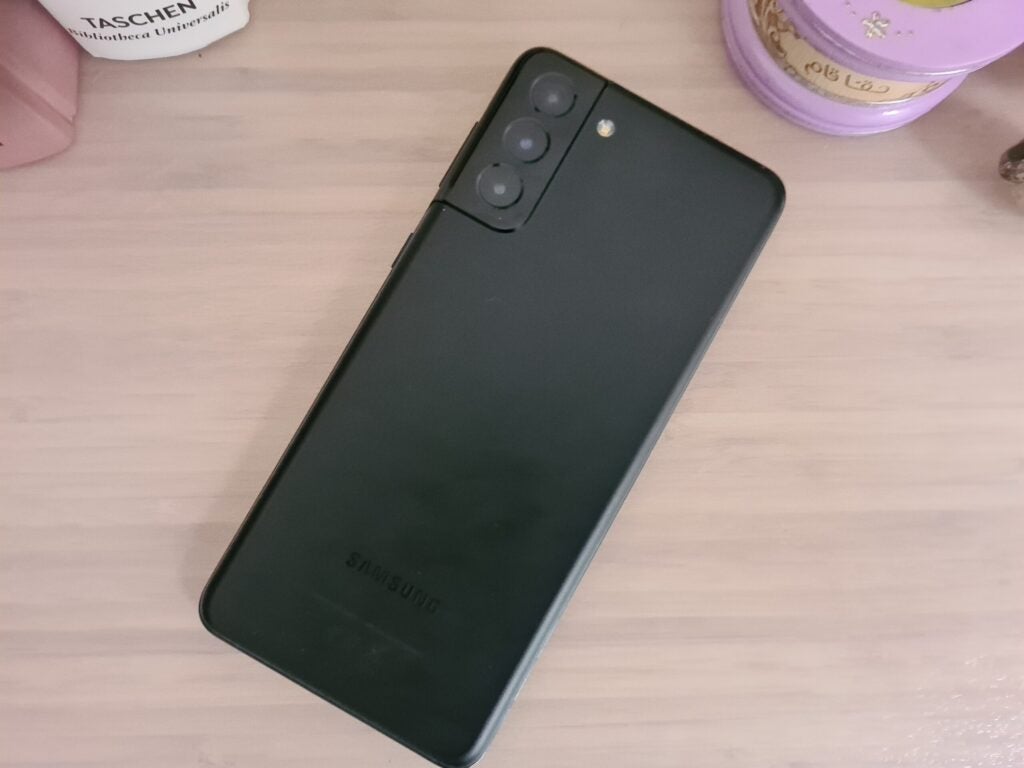
In addition, it also offered no flex when pressed, making it generally feel more sturdy. The IP68 water-resistant body should provide reassurance and I had no trouble with the handset surviving a London downpour.
The in-screen fingerprint sensor also continued to work flawlessly in these conditions, which is a good thing in the current climate, where face-unlocking as a verification method outdoors during a pandemic is about as useful as a third nipple.
In fact, my only issues with the design of the S21 Plus are those that applied to the S20 Plus, too. Chief among these is that the S21 Plus doesn’t come with a 3.5mm headphone jack. The only port on offer is a USB-C charge port. This year Samsung has also ditched the microSD slot across the entire S21 range.
Despite audio quality being of importance to me, I’ve made peace with the fact that the majority of phones will no longer arrive with 3.5mm jacks. As such, I now use true wireless earbuds for the daily commute and running. Like Apple, Samsung has opted to ship the Galaxy S21 Plus without earphones and a phone charger, in order to reduce its environmental footprint.
The lack of a microSD slot is a bigger blow. As a golden-oldie with a local music library, who also uses their phone to record footage for the Trusted Reviews YouTube channel, the lack of a means to upgrade my phone’s storage is a particular annoyance. This is made worse on learning the phone only comes with either 128GB (tested) or 256GB of internal storage. I’d managed to fill the 128GB version of the S21 Plus within three days of turning it on – although, in fairness, this was because I was shooting 4K video.
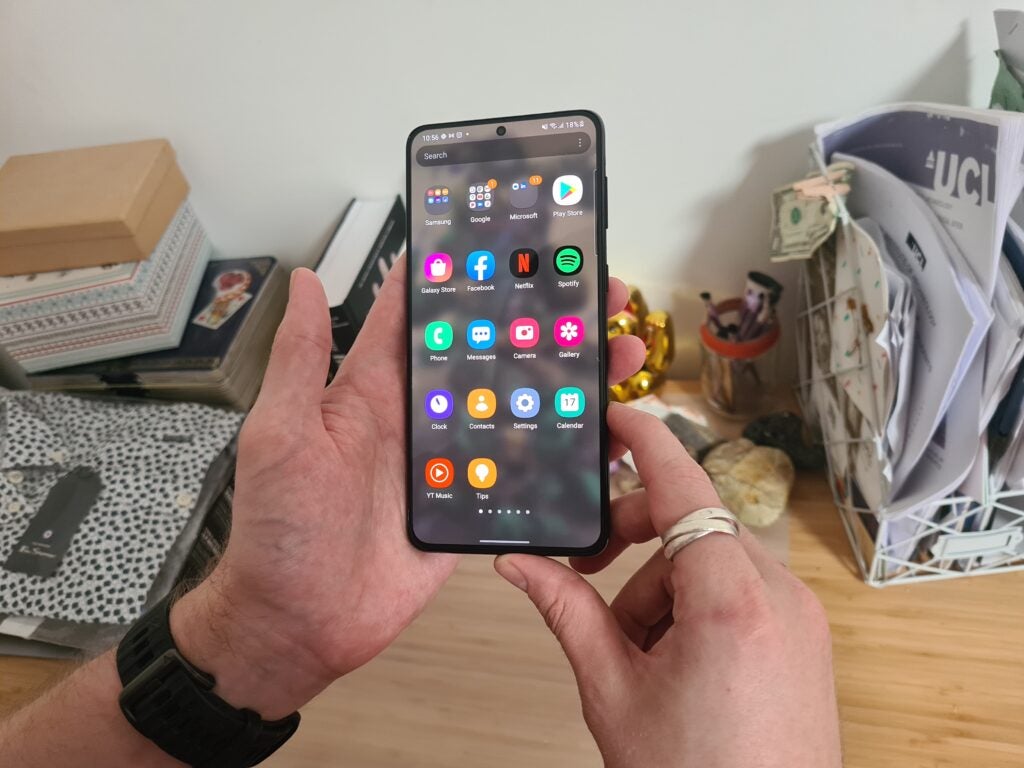
The Galaxy S21 Plus’ screen pulls a cool trick, but there’s a compromise
-
The Galaxy S21 Plus’ 6.7-inch screen has a variable refresh rate screen that can jump between 48-120Hz, making it one of the best for gaming
-
But it caps resolution at 2400 x 1080 pixels, so it’s lower-res next to most flagships
-
HDR performance is excellent, making it ideal for streaming movies and TV
Spec-heads will also bemoan the fact that, at first glance, the Galaxy S21 Plus screen looks like a downgrade on the S20. This is because, despite being the same size, it has a lower 2400 x 1080 resolution rather than the 3200 × 1440 of the S20.
However, in real-world use the S21’s display is actually a huge step up on the S20 Plus’ screen for one key reason: it has a variable refresh rate. This is a key feature I’ve been hammering on about since Razer made high refresh rate phone screens mainstream all the way back in 2018 with its first-gen Razer Phone.
Refresh rate refers to how many times a display renders an image every second. A higher number results in the phone feeling smoother in use and, if coupled with a similar polling rate, more responsive. The downside is that a higher refresh rate puts a much bigger drain on a device’s battery.
This is the reason, to get a 120Hz refresh rate on the older S20 Plus, you’d have to downgrade its maximum resolution. Even then, the phone would always run at 120Hz, regardless of whether the task you were doing merited the increased rate – for example, for watching movies or TV shows, which are mastered at a lower hertz. In certain situations, a lower rate is also better for saving battery life. A good example of this is always-on displays, where there’s no tangible benefit to going beyond 1Hz since the screen is simply displaying a clock or an incoming notification.
The S21’s screen doesn’t go quite as low as 1Hz, but it offers the best of both worlds by being able to intelligently switch between 48-120Hz, depending on the process running on the phone.
This meant I was able to benefit from the 120Hz when playing games such as CoD Mobile or PUBG (during gaming, the increased rate actually helped me play better by reducing the time between pressing an on-screen command and it being rendered), without having to unnecessarily drain the battery while watching Netflix.
Screen quality has also seen an improvement, with the phone’s out-of-the-box profile looking noticeably cooler, and as a result more balanced than the S20 Plus. The use of AMOLED ensures blacks are wonderfully inky, and the phone’s incredibly high maximum brightness and HDR support meant that Netflix and Amazon Prime content looked wonderfully immersive. Watching Bosch in HDR, the cityscape was full of details you’d miss on most cheaper phone displays.
The only minor downside is that, unlike the £100/$100 more expensive Galaxy S21 Ultra, the Plus’ screen doesn’t support Samsung’s S Pen stylus. Although, considering I barely use the feature when reviewing Samsung Note phones, this isn’t a huge deal for me personally.
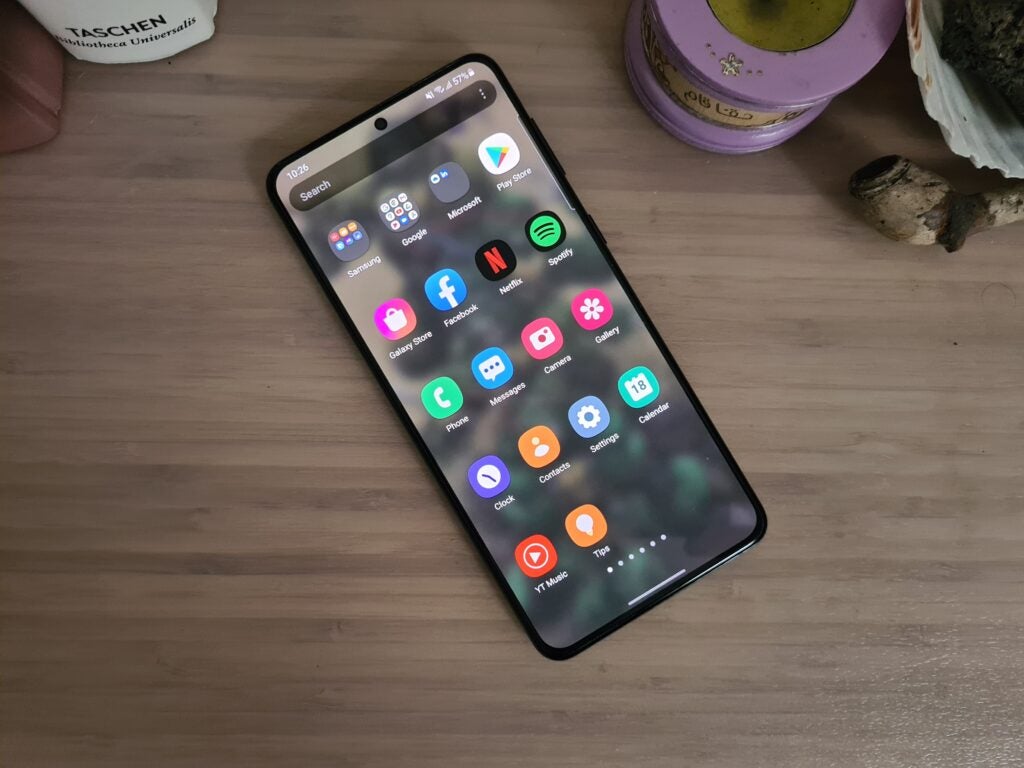
The Galaxy S21 Plus offers great performance
-
The Galaxy S21 Plus comes with either a Qualcomm Snapdragon 888 or Exynos 2100 CPU
-
Both offer decent performance, but the Exynos version isn’t as power-efficient
The Galaxy S21 Plus is available with two different chip options. Depending on the region you’re in, you’ll find it housing either a Qualcomm Snapdragon 888 or Exynos 2100 (tested) CPU, but both versions have 5G modems and come paired with 8GB of RAM. So, although there are flagships available with more memory, the S21 Plus is on a par with the majority of 2021 and late-2020 handsets in the same price bracket.
However, past experience has shown there to be a significant difference between the user experience of a Samsung device with a Qualcomm chip and one with the Exynos unit. The latter devices have been found to be less power-efficient than their Qualcomm rivals. I’ve only had a chance to test the Exynos version of the Galaxy S21 Plus, and my experience mirrors that of mobile editor Max Parker reviewing the base S21 and S21 Ultra.
This means the Galaxy S21 Plus proved more than powerful enough to deal with every process I threw at it. The phone managed to easily run PUBG with its graphics settings maxed with the adaptive refresh rate turned on. It also blitzed through basic video editing when I was cutting down footage for our video producer. Photo editing in Photoshop Express ran smoothly, too, and through my time with the phone so far I’m yet to find a process the S21 Plus can’t handle.
The only time I noticed any issue was on running the 3DMark Wild Life stress test on repeat. This is a 20-minute stint designed to push a phone’s chip to its absolute limits. On the third run through, I noticed heat rise to the point the Galaxy S21 Plus felt warm to the touch and was getting close to CPU throttling.
Aside from that, the handset performed as expected throughout the benchmark tests, roughly matching the performance of its S21 siblings. This makes the Galaxy S21 Ultra one of the most powerful phones on the market. You can see how it scored in each test in the table below.
The Galaxy S21 Plus camera is very similar to its predecessor
-
The S21 Plus has a near-identical camera setup to the S20 Plus, for image quality that’s good, but not best-in-class
-
Differences are down to how images are processed and the ability to shoot video in 8K at 30fps
The Galaxy S21 Plus comes with a near-identical camera setup to its predecessor. Around the back you’ll find a tri-camera comprising a 12-megapixel main, 64-megapixel telephoto and 12-megapixel ultra-wide sensors. Round the front is a 10-megapixel camera in a central hole-punch placement in the screen. The only minor difference is that Samsung has opted to remove the ToF (time of flight) sensor seen in the S20 Plus’ rear camera.
Putting the rear camera through its paces, I found that in its Auto setting, performance was – for the most part – identical to that of the S20 Plus. The camera is excellent, and more than good enough to capture crystal-clear images for use on social media, or to take the odd selfie.
In reasonable light the camera performs well, with the main sensor proving wonderfully reactive and offering fast autofocus speeds. The Portrait mode also manages to produce a much better bokeh effect than that seen of many rival phones, such as the OnePlus 8T. Bokeh is a cool effect where the object in the foreground is in focus, but the background is blurred.
Colours are also reasonably realistic, although, like the S20 Plus, processing does over-sharpen images ever so slightly. The only mainstream handsets to consistently match or beat the S21 Plus Ultra on image quality are the iPhone 12 Pro Max, Pixel 5 and Huawei P40 Pro Plus, which remain the best camera phones on the market.
The camera is also quite capable in low light, but not on a par with the ruling Pixel 5. In the main, images taken in low light are usable and noise-free – but, like all phone cameras, the unit struggled in mixed light conditions, with bright street lamps or car headlights occasionally appearing overexposed.
I also remain unsold on Samsung’s hybrid zoom tech. It claims to use processing wizardry and the multiple lenses to let you, in theory, take usable photos at up to 30x zoom. However, through testing I never once managed to capture a great shot at 30x zoom, even when using a GorillaPod. Results are better when limited to 10x zoom. At this setting I was able to get usable shots without blur free-handed.
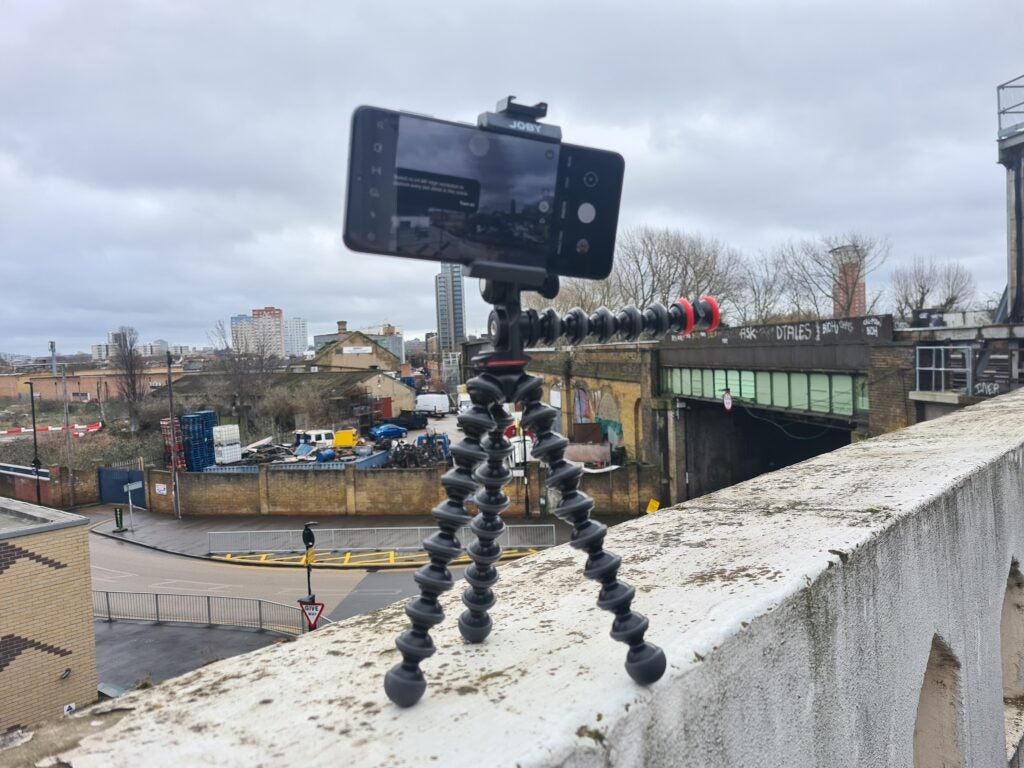
The only significant differences between the S21 Plus and S20 Plus I noticed came down to minor software tweaks and optimisations. For starters, the S21 Plus can now capture 8K footage at 30fps, rather than 24fps. However, when you consider how quickly capturing 4K at 60fps consumes storage, I can’t see most people taking advantage of the feature.
The more useful addition is the new Director’s View mode. This lets you capture images and footage using the front and rear cameras simultaneously. The idea here being that if you’re a YouTuber or blogger looking to chronicle your lockdown life, then you can do so easily using the S21 Plus.
You can see a selection of photos taken on the Galaxy S21 Plus below.







The Galaxy S21 Plus battery will just about make it through a day and half with heavy use
-
The Galaxy S21 Plus will survive a day’s heavy use with battery to spare
-
Charging plug isn’t included
My biggest concern about the S21 Plus was battery life. This is a result of my past experience with Exynos chipsets, which have struggled to make it through a full day of heavy use. As such, my expectations were low.
Thankfully, my experience with the Exynos S21 Plus hasn’t been as poor as expected. Using it as my primary phone, I have found that the handset easily makes it through a full day of constant use. This entails regularly checking social media and email feeds throughout the day, sporadic web browsing, taking and making a few calls, an hour’s gaming over lunch, and a Netflix binge before bed. In this scenario, I generally awoke the following day with about 30-40% battery remaining, having started at 100% the morning before. Such stamina is on a par with most phones of this size.
However, as ever, more intensive tasks will put a bigger drain on the phone’s battery. Streaming Netflix with the screen set to 50% brightness, which is roughly 175-200-nits, the Galaxy S21 Plus discharged an average of 5-6% of its charge per hour. Playing PUBG with the same brightness and the adaptive screen mode turned on saw an average drain of 10% per hour.
Charge times will vary depending on the plugs you have lying around. The Galaxy S21 Plus supports charge speeds of up to 25W, which puts it behind rivals from the likes of OnePlus, Xiaomi and Oppo, which offer speedier proprietary fast-charge solutions. Nevertheless, with a compatible plug I found that topping up the Galaxy S21 Plus was more than fast enough, with it going from 0-100% within an hour.
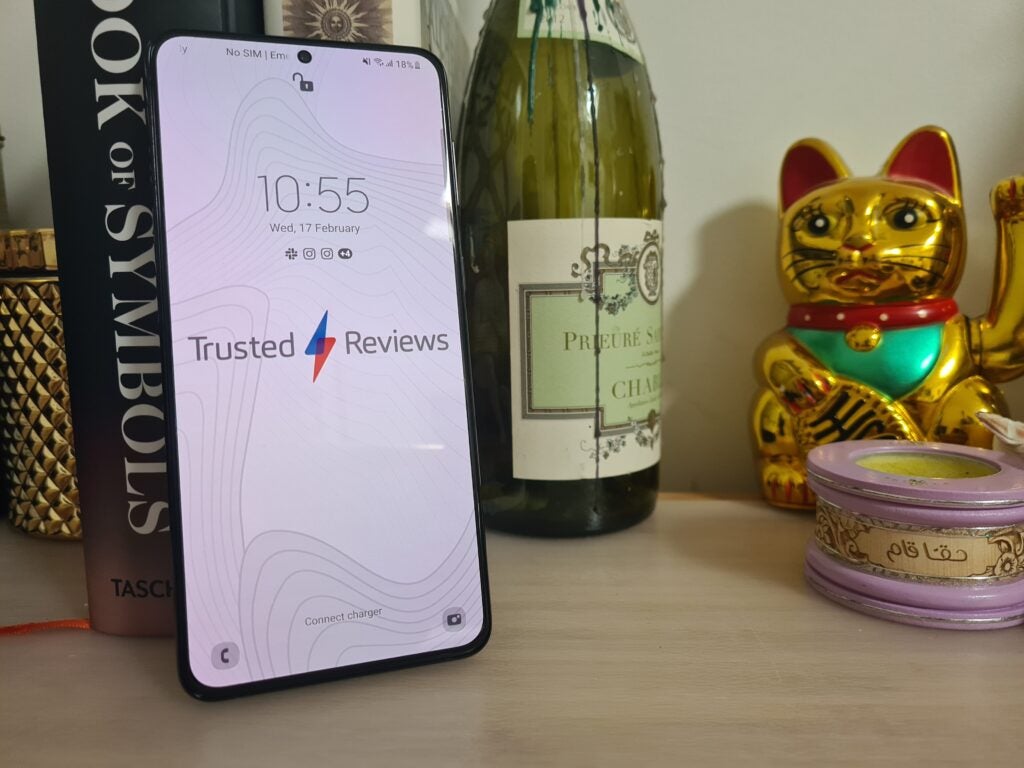
You should buy the Galaxy S21 Plus if:
- You haven’t upgraded your device in the past three years
If you’re a fan of Samsung phones, and you haven’t upgraded your device in the past few years, then the Galaxy S21 Plus is a solid option. It doesn’t have one killer feature, but by getting all the basics right, it earns its standing as one of 2021’s best all-round Android phones. - You’re a gamer
The Samsung Galaxy S21 Plus is a great choice for gamers. Its variable refresh rate screen lets you enjoy super-fast, responsive gameplay, without having to sacrifice battery life along the way.
You shouldn’t buy the Galaxy S21 Plus if:
- You’ve bought a flagship in the past two years
If it’s been less than two years since you bought your last phone, and weren’t tempted by the older S20 Plus, then there’s little reason to jump on the S21 Plus. It’s a 0.5 upgrade that refines and tweaks the formula Samsung debuted last year, rather than rethinking it entirely.
The post Galaxy S21 Plus review: A 0.5 upgrade to one of our favourite Android phones appeared first on Trusted Reviews.
Source Trusted Reviews ,Home Appliances Reviews

No comments